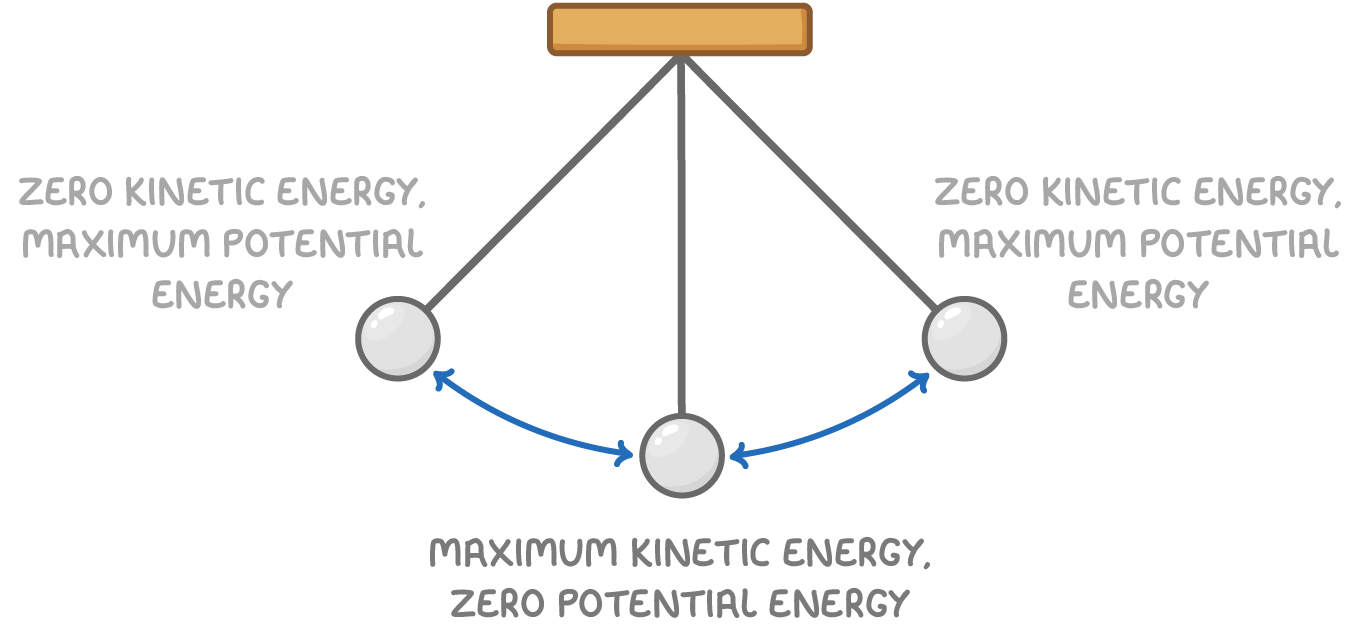Conservation Of Energy
This lesson covers:
- The concept of kinetic energy and how to calculate it
- Gravitational potential energy due to an object's position
- The law of conservation of energy
- An example applying energy concepts to a pendulum system
Kinetic Energy

Kinetic energy is the energy that an object possesses due to its motion. To calculate the kinetic energy of an object, use the formula:
Ek=21m v2
Where:
Ek = kinetic energy (J)
m = mass (kg)
v = speed (m s-1)
Worked example - Kinetic energy of a rolling ball
Calculate the kinetic energy of a ball rolling with a velocity of 5 m s-1 and a mass of 2 kg.
Step 1: Formula
Ek=21 m v2
Step 2: Substitution and Correct evaluation
Ek=21×2×52=21×2×25=25 J
Gravitational potential energy
Gravitational potential energy is the energy stored in an object as a result of its vertical position within a gravitational field.
It is calculated using the formula:
Ep = m g h
Where:
- m = mass (kg)
- g = acceleration due to gravity (9.81 m s-2).
- h = height above reference point (m).
Worked Example - Gravitational potential energy of a raised ball
Let's calculate the gravitational potential energy of a ball that weighs 1 kg and is raised to a height of 10 meters.
Step 1: Formula
Ep = m g h
Step 2: Substitution and correct evaluation
Ep=1×9.81×10=98.1 J
Conservation of mechanical energy
The law of conservation of energy states that energy is only transformed from one type to another; it is neither created nor destroyed.

In the case of a pendulum, the total mechanical energy is maintained throughout its motion. As it swings, the pendulum's energy constantly transforms between kinetic energy and potential energy.
Key points:
- At the highest points of its swing, the pendulum has maximum potential energy and minimum kinetic energy.
- At the lowest point of its swing, the pendulum has maximum kinetic energy and minimum potential energy.